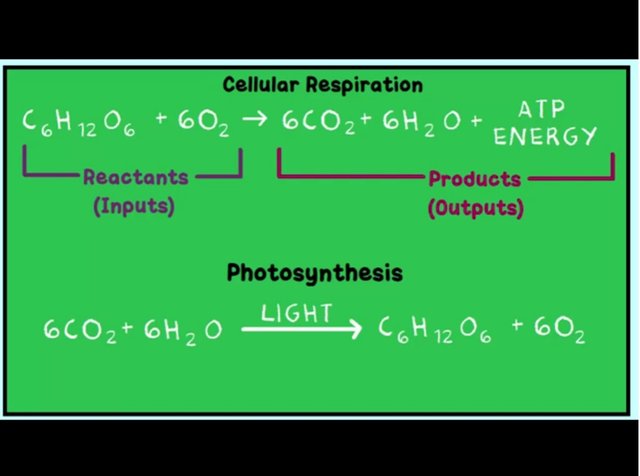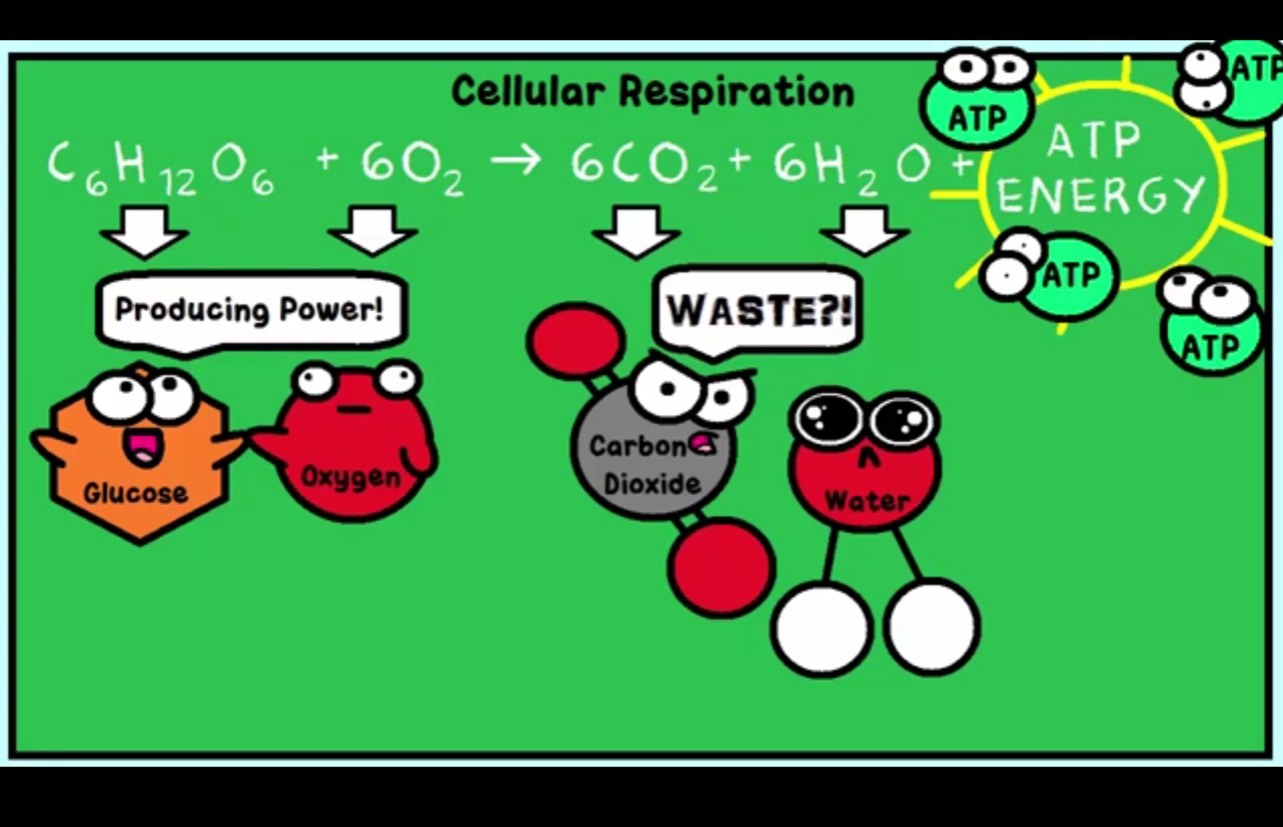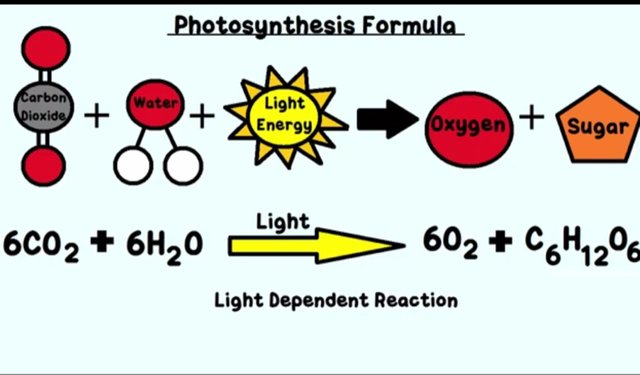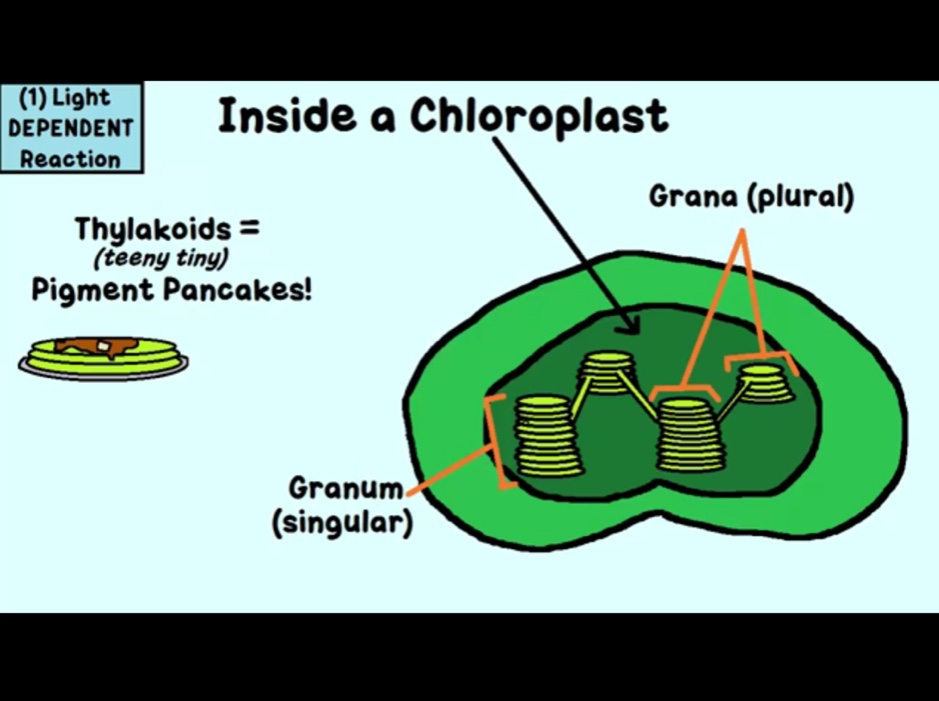In order for cells to function they require a certain type of energy which is called ATP ENERGY [(Adenosine Triphosphate) - a type of nucleic acid that is jam packed with three phosphates—when the chemical bond that holds that third phosphate is broken, it releases a great amount of energy which is converted to DIphosphate. The process of making ATP energy is a different process for each cell.
Various procedures of cells making ATP:
AEROBIC CELLULAR RESPIRATION - Aero(Air)
In Eukaryote Cells

As we can see Glucose is a reactant in terms of cellular respiration is being broken down while in Photosynthesis Glucose is the product that makes it. Both that are being made and broken are in process of forming ATP energy. In other, Glucose is the starter molecule in cellular respiration.
Since we are not photosynthetic we need to get a food source.
Cellular Respiration has 3 major steps (focusing on Eukaryotes)
The first step is GLYCOLYSIS. This first step takes place in Cytoplasm. This step does not involve oxygen but it needs the sugar Glucose since it converts itself to a more usable form called Pyruvate. In order for this process to occur this needs the help of ATP energy. The net yield of this step is approximately 2 ATP Molecules and 2 NADH Molecules which is also known as “Coenzymes.” Coenzymes has the ability to transfer electrons which aids to the production of more ATP Energy.
The second step is KREBS CYCLE also known as “Citric Acid Cycle” this steps involves the Mitochondria which requires the presence of the element Oxygen. The Pyruvate that was made in the first step would be converted and oxidized. The results are the production Carbon Dioxide, 2 ATP Molecules, 6 NADH Molecules, and FADH(subscript2) Molecules (It also another Coenzyme that assist the transportation of more ATP Molecules)
The third step is the ggElectron Transport Chain**. This is still in the Mitochondria (which needs Oxygen) — In this process, electrons are transferred from the NADH and the FADH(subscript 2) to several electron carriers and they are used to create a PROTON GRADIENT (The product of the electron transport chain.) The protons are used to power the ATP Synthase [(ATP Synthase is an enzyme that takes Phosphates and ADP so it equals to an ATP )]which creates more ATP energy. Oxygen is the final acceptor of the electrons, and when you have an oxygen molecule with two protons you get H20 which is water and it serves as a product as well. The Electron Transport Chain produces a lot of ATP energy compared to the other two because of the ATP Synthase.
So in order to get your ATP Energy the picture below indicates its process:

However this was just one way to create ATP ENERGY, and it is a very efficient one. Although all cells has different ways of creating this type of energy some cells if there are no oxygen molecules they would proceed to the process of fermentation.
ATP ENERGY is critical for cells in order to carry out their cellular activities.
In short, according to Wikipedia Cellular respiration is a set of metabolic reactions and processes that take place in the cells of organisms to convert biochemical energy from nutrients into adenosine triphosphate (ATP), and then release waste products.
Photosynthesis

Photosynthesis is the process by which plants and other organisms such as bacteria and protists that uses sunlight, carbon dioxide, and water to produce sugar and oxygen.
As we all know plants and animal need Glucose to produce ATP ENERGY in the process of Cellular Respiration.
Through Photosynthesis, plants are able to create their own Glucose since they have adaptations that enables them to carry out Photosynthesis in a variety of environments.
Plants have light capturing molecules called, “PIGMENTS”
One pigment that plants use is called “CHLOROPHYLL” (It is what causes to makes plants look green)
Chlorophyll is found in the chloroplast of plant cells.
2 major reactions that occur in the chloroplast that make up Photosynthesis:
Light Dependent Reaction- This reaction happens in Thylakoids [Little compartments in the Chloroplast that contains the pigment they tend to be in GRANA (Singular: Granum - stacked
In this reaction light is converted by the process that involves multiple photo systems into chemical energy which is ATP and NADPH. Water is also split since the protons, electrons and the oxygen which is the product comes to play. (See Photo Attached Below)

Light Independent Reaction- This reaction is also known as “Calvin Cycle” or “Dark Reaction”
This reaction also occurs in the Chloroplast although instead of it happening in the Thylakoids it appears in the Stroma.
Through this reaction that occurs simultaneously with the first reaction the outcome is the creation of Glucose which allows plants to survive.
In short, the process of Photosynthesis is necessary since plants are the producers of the food web because Photosynthesis serves as the energy for consumers.
Sources:
Congratulations! This post has been upvoted by the communal account, @steemph.cebu by blackelephant being run at Teenvestors Cebu (Road to Financial Freedom Channel). This service is exclusive to Steemians following the Steemph.cebu trail at Steemauto. Thank you for following Steemph.cebu curation trail!
Don't forget to join Steem PH Discord Server, our Discord Server for Philippines.
Downvoting a post can decrease pending rewards and make it less visible. Common reasons:
Submit
Nice, this reminds me of my science class all over again..haha..great post by the way
Downvoting a post can decrease pending rewards and make it less visible. Common reasons:
Submit
Hi @blackelephant. You should cite your article references and image's sources. It's a common courtesy to honour the original author when using their materials.
Downvoting a post can decrease pending rewards and make it less visible. Common reasons:
Submit
Thank you. 😊
Downvoting a post can decrease pending rewards and make it less visible. Common reasons:
Submit